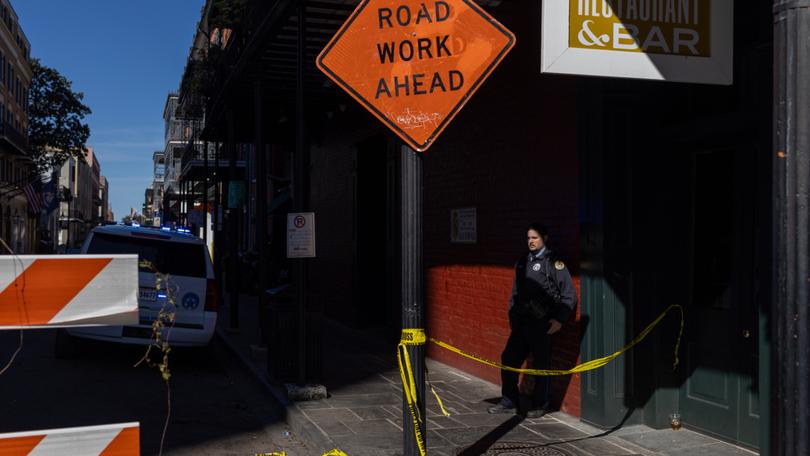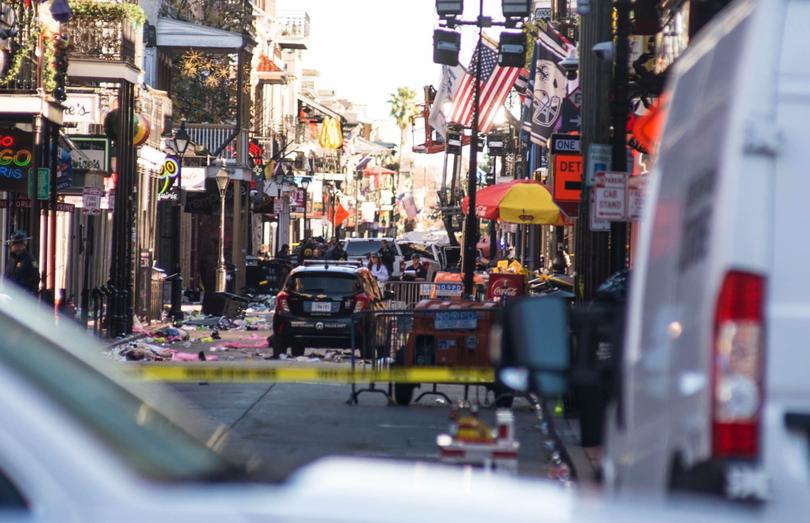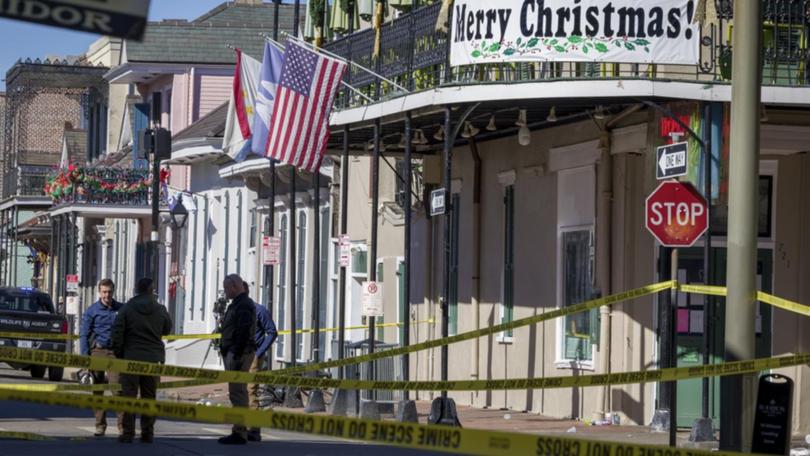New Orleans terror attack: Renovation of vehicle barriers gave attacker an opening, authorities say

A key piece of protective infrastructure was undergoing repairs in New Orleans when a driver slammed into a crowd of New Year’s revealers in the city’s famous French Quarter, and several backup security measures failed to stop him, local officials said Wednesday.
New Orleans began to install new vehicle bollards around its most famous streets and hot spots ahead of the Super Bowl in February, Mayor LaToya Cantrell said after the attack, which killed at least 15 and injured dozens.
The short, sturdy posts - made of metal, concrete or wood - often line the perimeters of historic public plazas or the entry points to famous streets, and are meant to block vehicles from accessing buildings or pedestrian zones.
Sign up to The Nightly's newsletters.
Get the first look at the digital newspaper, curated daily stories and breaking headlines delivered to your inbox.
By continuing you agree to our Terms and Privacy Policy.Terrorism experts say bollards are among the most reliable means of preventing assailants from using vehicles to run down members of the public, especially in cities expecting large crowds for special occasions.
The bollards have only become more crucial, these experts said, as those seeking to inflict mass casualties increasingly turn to high-speed vehicular attacks.
But Ms Cantrell and other officials said the bollards on Bourbon Street were down for renovations at the time that a driver, identified by the FBI as Shamsud-Din Jabbar, 42, swerved into a crowd and kept going until multiple victims were dead.
Mr Jabbar, an American citizen, was fatally shot by police officers at the scene, officials said.
Ms Cantrell said the bollards had stopped working properly soon after they were installed, and were being replaced as part of a broader infrastructure improvement package related to the Super Bowl.
“Over 10 years ago, the city of New Orleans implemented an infrastructure project placing bollards on Bourbon Street,” the site of the attack, Ms Cantrell said.
“Shortly thereafter, the malfunctions of those bollards ensued, from Mardi Gras beads on down.”

New Orleans is replacing its old bollards with removable, stainless-steel units along Bourbon Street, between Canal and St. Ann streets, covering much of the French Quarter, according to local plans.
But on New Year’s Eve, “bollards were not up,” Ms Cantrell said.
Police Superintendent Anne Kirkpatrick said officials had deployed police vehicles and large physical barriers in place of the bollards, to deter vehicles from accessing pedestrian areas on New Year’s Eve. She conceded those measures proved ineffective.
“This particular terrorist drove around, onto the side walk, and got around the hardened - hard target,” Ms Kirkpatrick said.
“We did indeed have a plan, but the terrorist defeated it.”
Experts said the deadly attack was a reminder that vehicles have become the weapon of choice for many extremists across the globe. Much of the planning for such attacks - such as renting a car or truck - can be carried out in plain sight, without raising suspicions. And if an attacker is determined to access an area where crowds have gathered, it can be difficult to stop them.
New Orleans, for example, had deployed about 400 police officers and traffic barricades around the city, expecting that crowds would gather for the annual New Year’s festivities, Ms Kirkpatrick said.
But “if you have a high-speed vehicle travelling at ramming speed, they’re going to pierce the protective perimeter,” said Bruce Hoffman, senior fellow for counterterrorism at the Council on Foreign Relations.
Mr Hoffman said law enforcement officials in the wake of the attack might start using bulkier bollards or barriers. But that alone would not address the question of how to fully prevent or mitigate mass carnage with a vehicle, he said.

A 2022 study published in the British Medical Journal found that, of 257 vehicular attacks that killed bystanders over roughly five decades through 2019, 71 percent had occurred within the previous six years.
As more people began using outdoor spaces for restaurant dining and other activities during the coronavirus pandemic, their exposure to such attacks only grew.
“By 2016, vehicle attacks were the most lethal form of attack comprising just over half of all terrorism-related deaths in that year,” said the study by researcher Ryan Scott Houser. “These attacks require minimal resources and planning to inflict widespread death and injury.”
An Islamic State flag was found in Mr Jabbar’s truck, the FBI said Wednesday. Several other high-profile vehicle attacks in recent years were also carried out by individuals who allied themselves with that group.
A man who pledged loyalty to the Islamic State manoeuvred a moving truck onto a bike path in Manhattan on Halloween in 2017, killing eight people and injuring others. He was later sentenced to life in prison.
Another man, who ploughed his car into a crowd of anti-racist demonstrators in Charlottesville earlier in 2017, is serving multiple sentences without the possibility of parole over the death of a woman, Heather Heyer, who had shown up to protest a neo-Nazi rally.
A Tunisian man who lived in Nice, France, drove a 19-ton cargo truck into a crowd on Bastille Day in 2016, hitting more than 500 bystanders and killing 86. French authorities said he had been radialized by Islamic State propaganda.
Surveillance footage taken in New Orleans early Wednesday shows a white pickup turning off Canal Street and accelerating around a law enforcement vehicle onto Bourbon Street. The vehicle appeared to match the Ford F-150 Lightning that authorities say was used in the fatal attack.
Videos and photographs verified by The Washington Post show the same type of truck ended up two and a half blocks from the Bourbon and Canal intersection. Gunshots can be heard on the video, as people ran and ducked for cover.
In fact sheets for local law enforcement, the federal Cybersecurity and Infrastructure Security Agency (CISA) encourages officials to draw up plans for protecting busy pedestrian streets, bridges and public events. But researchers and authorities caution that no one size fits all, and that local officials should prioritize the public spaces they are fortifying based on how likely they are to draw crowds.
“Nice, (France) is a great case study on implementing necessary improvements to prevent another attack,” Mr Houser said in an email.
“They added bollards, concrete barriers, and vegetation to help protect pedestrians. Vehicle barriers are probably the most basic and easiest mitigation measure to implement at any event or outdoor gathering.”
Louisiana Governor Jeff Landry (R) said at the news conference Wednesday that a durable solution was in the works.
“We’re going to fix it. It is going to be a top priority as we go into the Super Bowl and Mardi Gras, and the solution that we’re going to come up with is going to be a permanent one,” Mr Landry said of the bollards.
© 2025 , The Washington Post
